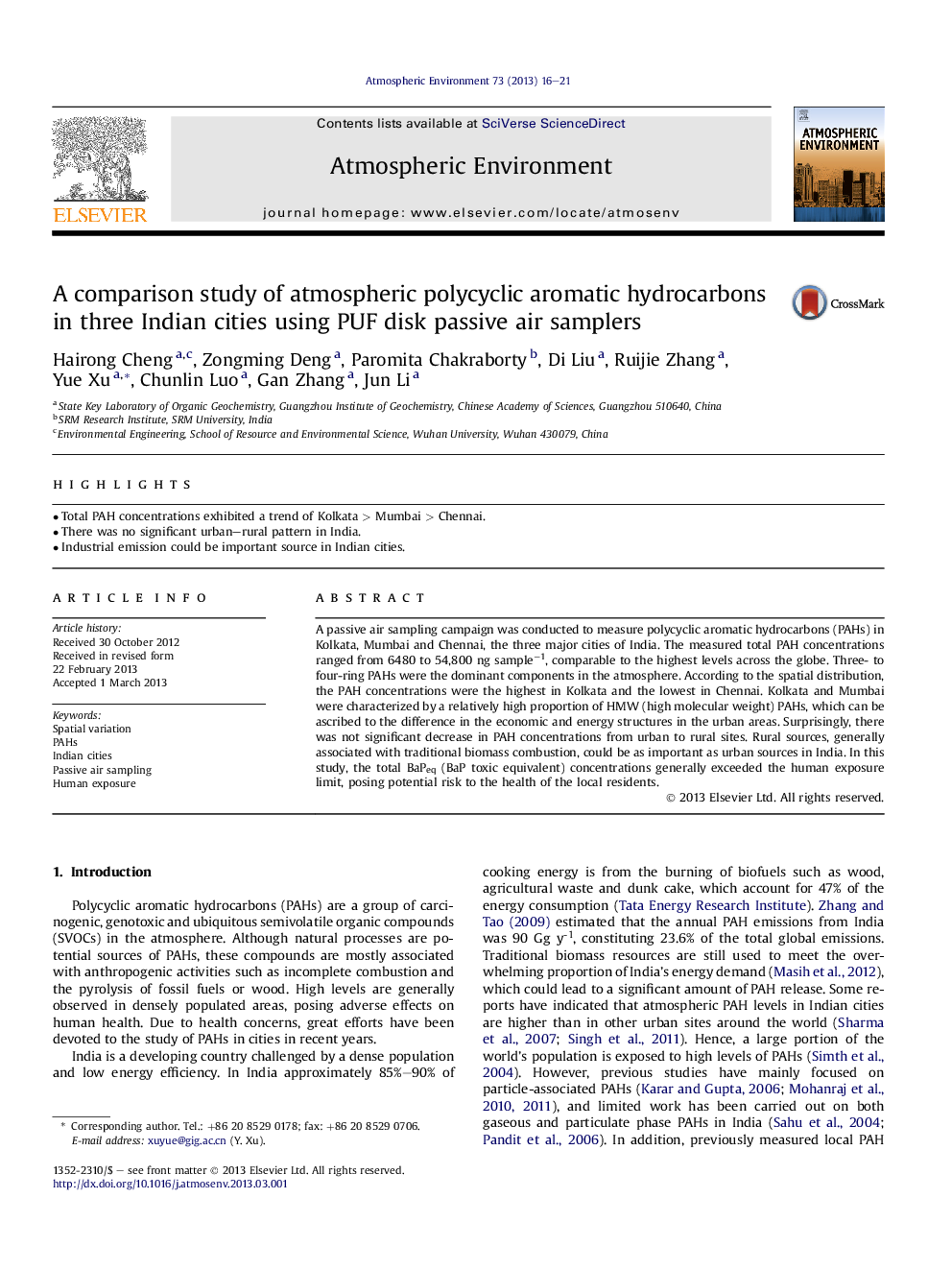| Article ID | Journal | Published Year | Pages | File Type |
|---|---|---|---|---|
| 4438217 | Atmospheric Environment | 2013 | 6 Pages |
•Total PAH concentrations exhibited a trend of Kolkata > Mumbai > Chennai.•There was no significant urban–rural pattern in India.•Industrial emission could be important source in Indian cities.
A passive air sampling campaign was conducted to measure polycyclic aromatic hydrocarbons (PAHs) in Kolkata, Mumbai and Chennai, the three major cities of India. The measured total PAH concentrations ranged from 6480 to 54,800 ng sample−1, comparable to the highest levels across the globe. Three- to four-ring PAHs were the dominant components in the atmosphere. According to the spatial distribution, the PAH concentrations were the highest in Kolkata and the lowest in Chennai. Kolkata and Mumbai were characterized by a relatively high proportion of HMW (high molecular weight) PAHs, which can be ascribed to the difference in the economic and energy structures in the urban areas. Surprisingly, there was not significant decrease in PAH concentrations from urban to rural sites. Rural sources, generally associated with traditional biomass combustion, could be as important as urban sources in India. In this study, the total BaPeq (BaP toxic equivalent) concentrations generally exceeded the human exposure limit, posing potential risk to the health of the local residents.
